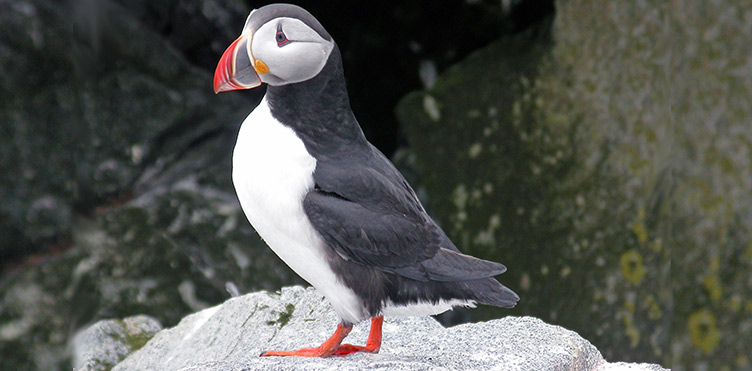
Thanks to an international study involving UNB, researchers have been able to track the movements of puffin populations in the winter for the first time – a breakthrough which may help ensure the long-term survival of the species.
Over the course of eight years, the team studied the seasonal behaviours of a wide range of puffin colonies across the species’ range. By combining data from multiple colonies, the researchers were able to build an accurate picture of the migration behaviours of Atlantic puffin colonies across the world.
Dr. Tony Diamond, a UNB ecologist who undertook the study led by the University of Oxford and conducted in collaboration with eight partners around the world, says the research is important as most of the mortality for seabirds takes place in the winter.
“Gaining new insights into their movements and behaviour in the winters is vital to understanding the survivability of puffins,” says Dr. Diamond, a professor emeritus with the Atlantic Lab for Avian Research at UNB.
Dr. Diamond and colleagues tracked puffins from the colony at Machias Seal Island, NB, for the study, published in November 2017 in the journal Current Biology. By outfitting birds with tags that detect light levels and measure time, the researchers were able to trace how far the puffins travelled, calculate the energy they used and whether they mixed with other colonies.
The study marks the first time that seabird migration behaviour has been studied on this scale in such comprehensive detail. Since the study, 21 of the 29 tags put on puffins in 2017 have been collected and the data is being analyzed.
“Working collaboratively to study multiple colonies allowed us to pool our results to build a broad picture, comparing behaviours between populations and mapping multiple migration routes.”
While the study has not provided any insights yet that will help bolster the puffin population – endangered in parts of Europe – Dr. Diamond says it is an important step.
“Puffins are not endangered in North America. But what is happening in Europe is probably going to happen here before too long. There are some early warning signs in puffin biology that mean it is important that we know where they spend the winter,” Dr. Diamond says.